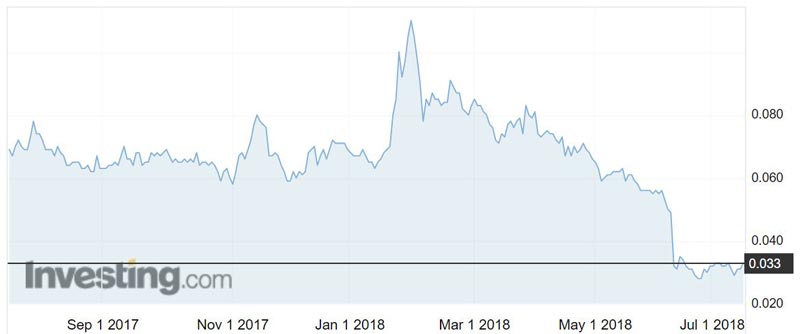Plenty more financiers interested in graphite project after funding collapse says Battery Minerals

Battery Minerals has fielded approaches from several potential backers interested in financing its Montepuez graphite project in Mozambique.
That’s good news for shareholders after Battery Minerals (ASX:BAT) lost a $US30 million funding deal with Resource Capital Funds in June and had to push back shipment dates.
The stock dropped about 40 per cent to 3c after the announcement — and has stayed around that level ever since.
But there is no shortage of new interest according to boss David Flanagan, who told Stockhead by phone from Africa that Battery Minerals had been contacted by seven groups that had either expressed interest in being part of the funding consortium or submitted proposals.
“So we have plenty of funding options, partly because the company is so cheap,” he said.
“We have about $20 million in the bank and a market cap of about $35 million, which tells you that the enterprise value is only about $15 million. We’re a good value company.”
Battery Minerals had been planning to start shipping an initial 45,000 to 50,000 tonnes a year of flake graphite in June next year but expects that will likely be about three months later than planned.

But Mr Flanagan is confident the company will get the funding it needs to bring the Montepuez project into production.
“We’re doing all those things we should be doing to make sure we lock in that finance,” he said.
“We’ve got a team of people that are dedicated to doing that and they’re working on it with urgency, but also we wanted to get a really good deal for shareholders.
“So we’re not just going to sign any bit of paper and we’re very conscious that the next deal we sign we’ll be closing and we’ll be financing the project.”
>> Stockhead graphite guide: why fire resistance and not electric cars may drive these stocks
Battery Minerals yesterday announced it had upped the resource at the Montepuez project by 14 per cent and found a new prospect.
The company also increased the overall grade of the project, placing it in the top quartile of projects, Mr Flanagan said.
“It would be amongst the highest-grade projects in the world,” he said.
“As we discover more tonnes, even though the total global resource might be 8 or 9 per cent, there’s always going to be an opportunity to mine something higher grade within the total resource.
“That gives us quite a bit of flexibility over time if we need to reduce costs or increase production through the plant by mining a higher grade.”
Battery Minerals expects to grow its resource further after it located mineralisation on the surface that stretched for over 1.5km.
Graphite demand is on the rise
Graphite demand is set to grow between 5 and 7 per cent annually between 2017 and 2027, according to market forecaster Roskill.
Lithium-ion batteries use about 40 times more graphite – used in the anode – than lithium.
Roskill says that by 2027, graphite use in batteries could be five to 10 times higher than the current level, depending on the uptake of lithium-ion batteries in electric vehicles and other applications.
Battery Minerals wants to be shipping 100,000 tonnes of graphite by 2020.
- Subscribe to our daily newsletter
- Bookmark this link for small cap news
- Join our small cap Facebook group
- Follow us on Facebook or Twitter
UNLOCK INSIGHTS
Discover the untold stories of emerging ASX stocks.
Daily news and expert analysis, it's free to subscribe.
By proceeding, you confirm you understand that we handle personal information in accordance with our Privacy Policy.








